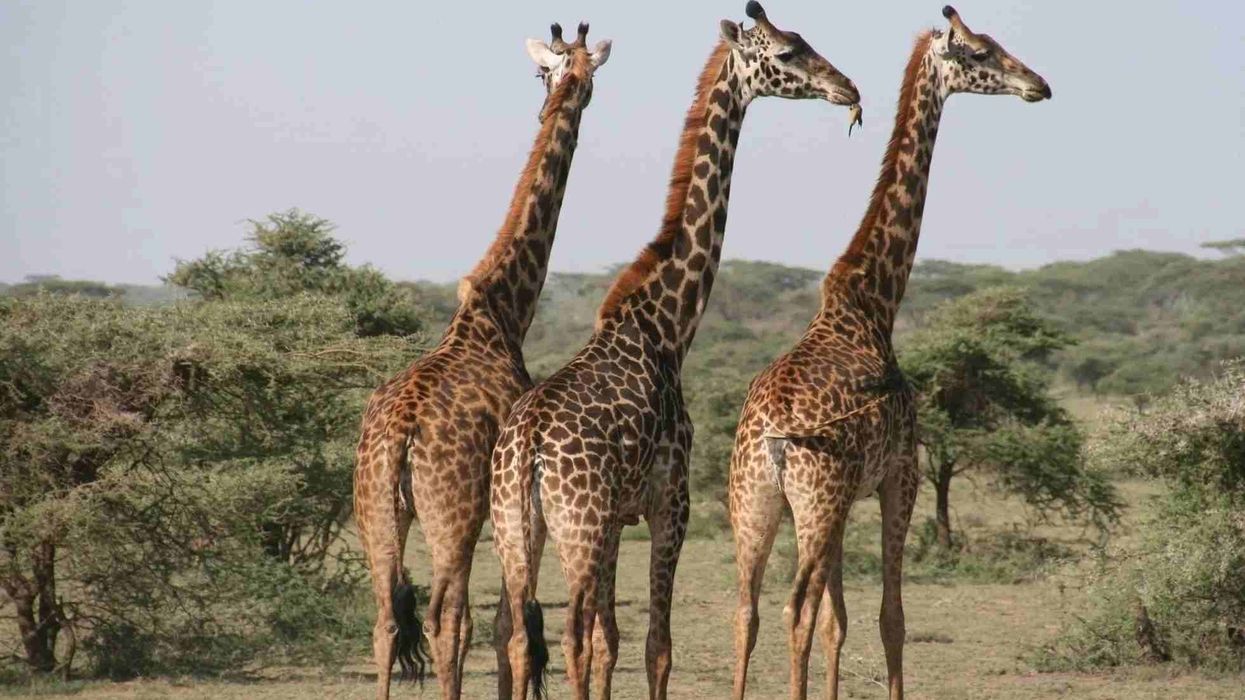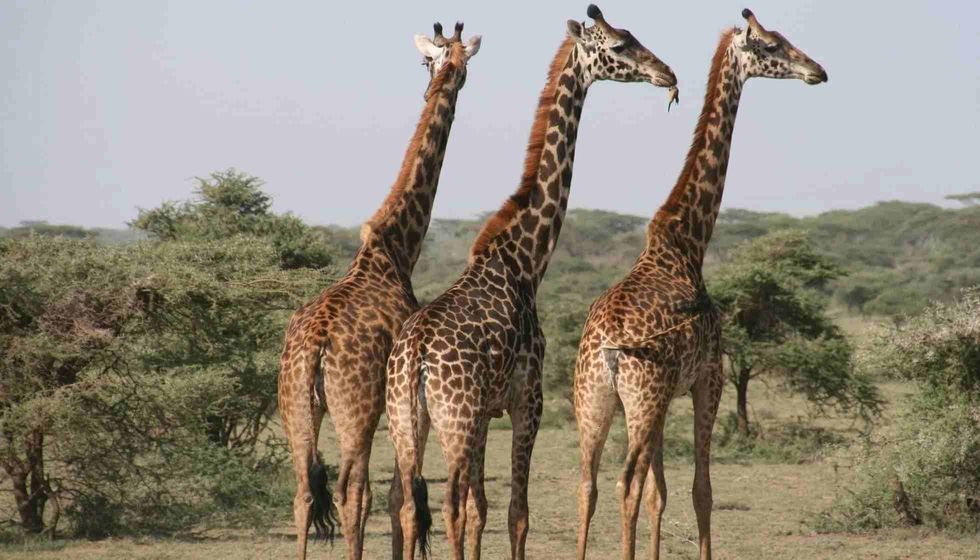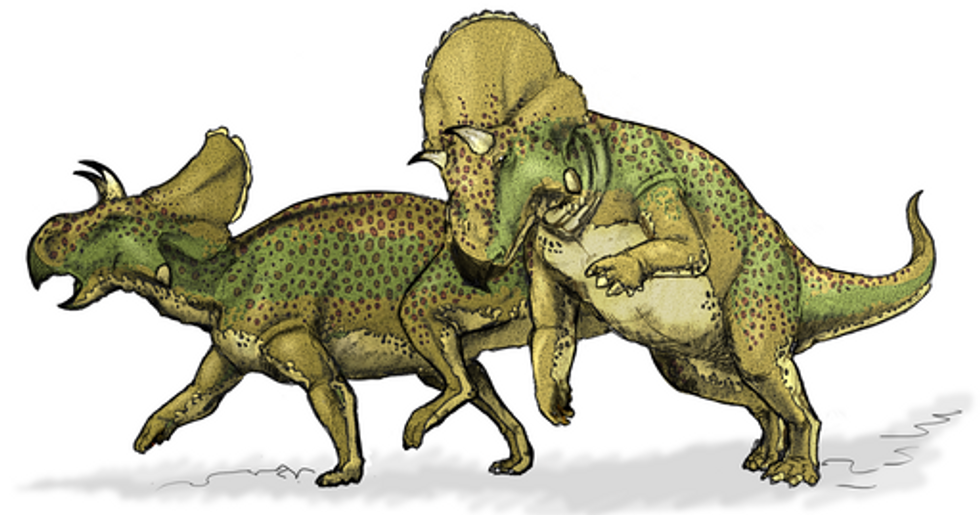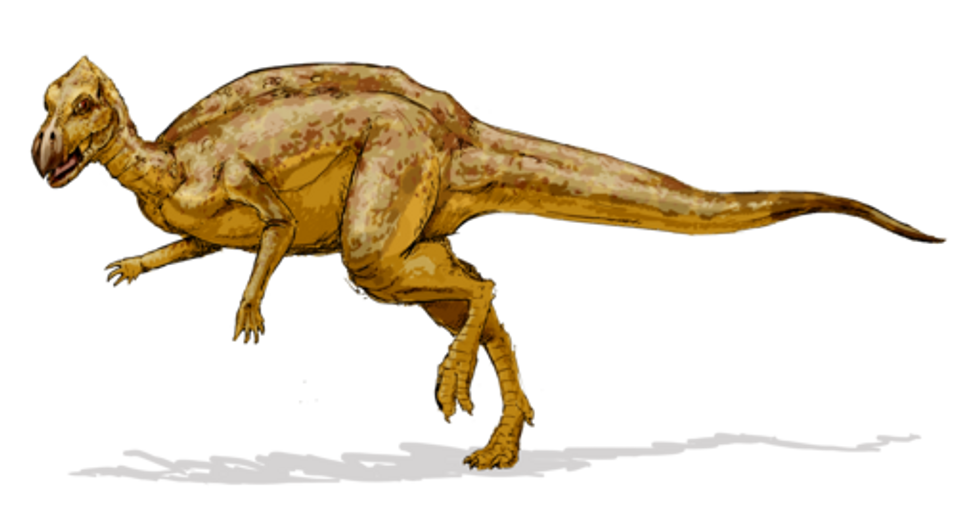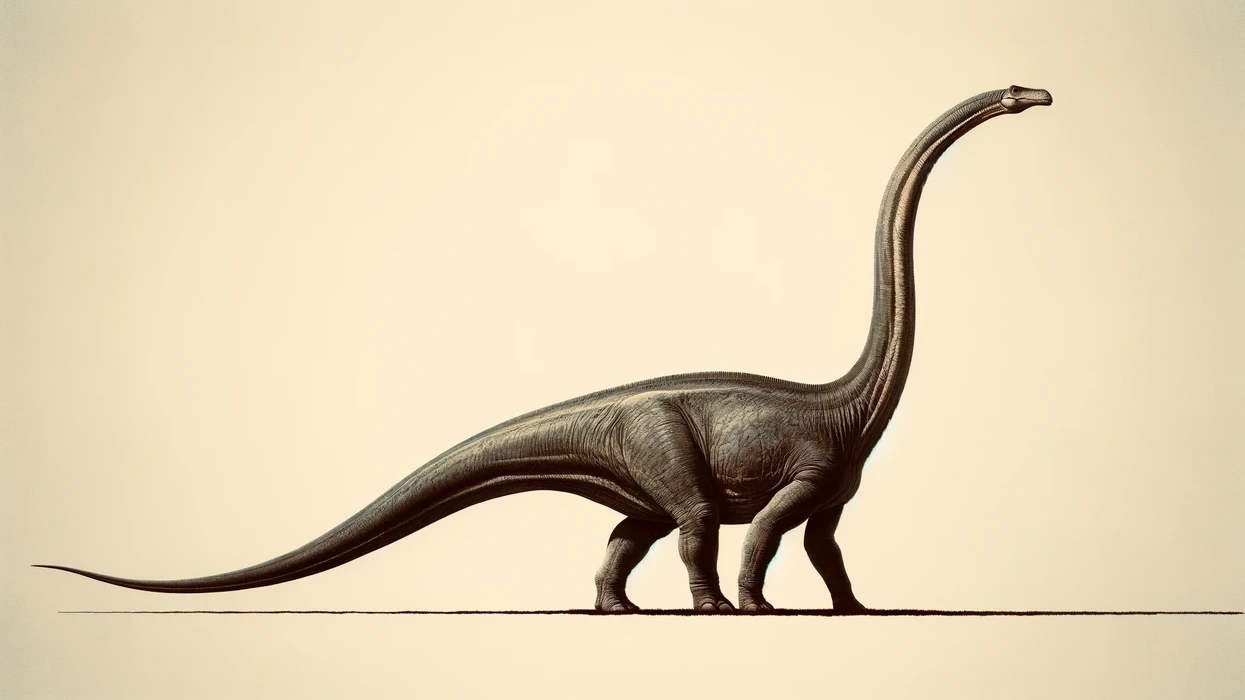The Angolan giraffe is a subspecies of the giraffe species found in the African countries of Bolivia, Zambia, Zimbabwe, and Namibia. The Angolan giraffe (Giraffa camelopardalis angolensis) is also called by the name Namibian giraffe. This is one of the two subspecies of the Southern giraffe (Giraffa giraffa), with the other subspecies being the South African giraffe.
Although the Southern giraffe (Giraffa giraffa) is considered a different species living in southern Africa, the IUCN recognizes only one species of giraffe (Giraffa camelopardalis) with nine different species.
However, there have been descriptions about the existence of up to nine extant giraffe species with respect to mitochondrial and nuclear DNA genetic research and morphological measurements of the genus Giraffa.
Like all giraffes, this subspecies is also a long-necked animal with a brown to a rich chestnut plumage. This subspecies is marked with large brown blotches with edges that are notched.
The spots are seen extending from the legs to the upper body, except the upper part of the face. A white ear patch is seen, unlike others.
The horns in giraffes are special protrusions called ossicones. These are actually ossified cartilage which is covered in skin and fur.
The populations of this subspecies are stable and also increasing in some regions of Africa. However, it has been estimated that the populations in a few areas in the north have been decreasing rapidly due to human activities like poaching and habitat loss.
The conservation of the subspecies called the Angolan giraffe is needed to restore the balance in the African habitat.
For more relatable content, check out these facts about Kordofan giraffe and Kangaroo Island dunnart.
Angolan Giraffe Interesting Facts
What type of animal is an Angolan giraffe?
The Angolan giraffe is a subspecies of giraffe found in Botswana, northern Namibia, south-western Zambia, and western Zimbabwe in Africa.
What class of animal does an Angolan giraffe belong to?
The Angolan giraffe (Giraffa camelopardalis angolensis) falls under the class of Mammalia in the kingdom of Animalia. This is considered a subspecies of the Southern giraffe and is also called by the scientific name Giraffa giraffa angolensis.
How many Angolan giraffes are there in the world?
It is estimated that around 13,000 animals of this African subspecies are found in the wild. There are around 20 individuals living in zoos. They are also found in National Park habitats.
The Southern giraffe, known to be the parent species of the African Angolan giraffe, have around 44500 individuals in the wild. The population number of the South African giraffe is around 31,500 estimated currently in the wild, of which around 45 are known to be found in zoos.
Where does an Angolan giraffe live?
There are two subspecies of the Southern giraffe found in a range from South Africa, Namibia, Zambia, Angola, Zimbabwe, Mozambique, and Botswana on the African continent.
The Angolan giraffe is distributed over a range of northern Namibia, south-western Zambia, Botswana, and western Zimbabwe. A genetic study in 2009 showed that the populations found in Etosha National Park and northern Namib desert formed separate subspecies, however, this result was nullified after genetic studies on mitochondrial DNA.
It is found that the home range of this subspecies is larger in unproductive regions like the Namib Desert, while it is much smaller in productive regions of Lake Manyara National Park.
The South African giraffe, also called a Cape giraffe, is the other subspecies of Southern giraffes from Africa. The populations of the South African giraffe are found in a range of South Africa, southern Botswana, southern Zimbabwe, and south-western Mozambique.
What is an Angolan giraffe's habitat?
The habitat of giraffes includes savannahs and woodlands habitats. They are found both in protected habitats like National Parks and non-protected ones in the wild.
The abundant growth of Acacia is also a criterion for the home of these giraffes. The usual habitat of the giraffes from Angola includes savannas, grasslands, or open woodlands. It is not necessary for the population of giraffes to be near water as they only drink occasionally.
It takes almost 12 hours to completely feed, drink, and undertake other activities during the day or nightfall. They are known to rest during the other times of the day.
Who do Angolan giraffes live with?
Giraffes in general are known to live in groups which are known as herds. However, some males are found living solitary lives. Group members can leave and rejoin the herd at anytime.
How long does an Angolan giraffe live?
Giraffes are long-lived animals and are known to live for up to the age of 25 in the wild. In captivity, the age is even higher.
How do they reproduce?
Giraffes are known to be polygamous and aspecific time for breeding is not available. Calves are usually born in the dry season, but mating can happen any time of the year.
They are known to sexually mature at three to four years of age, however they start mating when they are six to seven years old. Females need to grow enough to handle giving birth. Male use its long neck and head for courting displays.
The gestation period for the females is 13-15 months. Young falls on the ground while giving birth and females stand upright.
What is their conservation status?
The conservation status of the Angolan giraffe is categorized as Least Concern by the IUCN Red List. The populations of this species are quite well distributed now in both protected and non-protected areas.
While the population in the southern range of distribution is stable and increasing, the population in the north is decreasing due to habitat degradation and poaching activities by humans. These giraffes are also affected by predation by carnivores. The common predators of the Angolan giraffe include lions, hyenas, and leopards.
Adequate measures need to be taken to counter the issues pertaining to the population of this species. Restoration of giraffes in the natural wildlife is needed.
Angolan Giraffe Fun Facts
What do Angolan giraffe look like?
Southern giraffes are known to have dark patches on the body which are rounded and irregular. These patches are of reddish-brown color.
Faded coloration is seen on the legs and the spots become smaller towards the limbs and close to the feet. The Angolan giraffe has big brown spots that are shaped in an angular form and these spots reach down towards the legs. The same spots are all over the body except the forehead.
Both subspecies, the Angolan giraffe and the South African giraffe, have distinctive features in the white ear patch. A small hump is also present on the back and this hump on the back is formed by seven vertebrae.
The Angolan giraffe is light in color, and in the range of northwest Namibia, the giraffe is almost colorless. The light brown patches on the body are surrounded by a pale cream coloration.
The South African giraffe has patches in the shape of stars and in various shades of brown color. These are surrounded by light tan coloration.
When a giraffe is born, the ossicones are flat. After a few days, the ossicones become upright and rigid. They are better developed in males than in females. The giraffe's ossicones are two to four in numbers and female ossicones also have more hair on them.

How cute are they?
Giraffes are considered quite adorable with their cute face and very calm demeanor.
How do they communicate?
Although they seem silent, they do communicate among themselves vocally which is not audible to humans. They also communicate via touches.
How big is an Angolan giraffe?
The average height of an Angolan giraffe ranges between 16-19 ft (4.87-5.79 m).
The Masai giraffe found in Kenya, Somalia, and Tanzania of Africa has a height up to 17 ft (5.18 m). The height is almost the same as the Angolan giraffe.
How fast can an Angolan giraffe run?
Giraffes are known to run really fast, but the burst of speed is only for a small distance. The speed of a giraffe is measured to be 40 mph (64.3 kph).
How much does an Angolan giraffe weigh?
The average weight of an Angolan giraffe is measured to be 2800 lb (1270 kg).
What are the male and female names of the species?
Males and females of this species are not given different names.
What would you call a baby Angolan giraffe?
Babies of the Angolan giraffe are called calves. (singular- calf)
What do they eat?
They are hardcore herbivores and feed only on leaves, flowers, seedpods, and fruits. All types of giraffes are known to browse acacia trees for a food source.
Are they dangerous?
They are not considered dangerous.
Would they make a good pet?
They are not taken as pets as giraffes need their wild habitat to thrive. If you want to see a giraffe, you can visit a zoo or a protected park.
Did you know...
The four distinct species of giraffes are the northern giraffe, southern giraffe, Masai giraffe, and reticulated giraffe.
Giraffes are quite friendly and are not at all dangerous to humans.
IUCN recognizes only one species of giraffes with nine subspecies. However, research has proved otherwise.
The fur of giraffes has antibiotics and smelly chemicals that help the animals repel parasites. This makes the animals stink.
What is the rarest giraffe?
The Rothschild's giraffe is the most endangered giraffe found in Uganda and Kenya. There are only 1669 individuals left in the world. It is a subspecies of the northern giraffe.
Do giraffes have 2 hearts?
The long neck and the large area between the head and the chest make people wonder if the animal has two hearts. But no, they have a large heart with powerful cardiovascular systems to take care of the big animal.
Here at Kidadl, we have carefully created lots of interesting family-friendly animal facts for everyone to discover! For more relatable content, check out these Polish Lowland Sheepdog facts and Irrawaddy dolphin facts for kids.
You can even occupy yourself at home by coloring in one of our free printable Angolan giraffe coloring pages.

